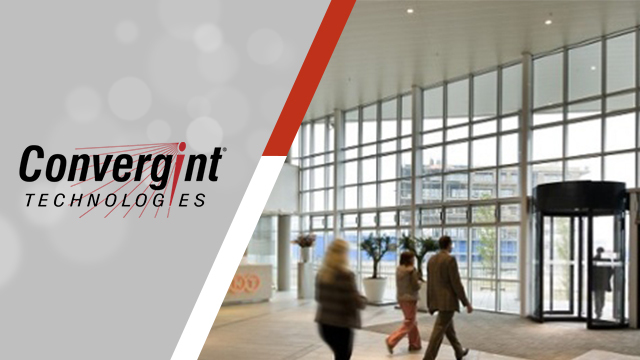An effective strategy for commercial office buildings to mitigate the risk of an active shooter is the effective deployment of security entrances. The problem is that not all security entrances work the same way. Their different capabilities have an impact on an organization’s overall anti-tailgating strategy in terms of capital outlay, manpower needed, annual operating costs, ROI, user education and preparation, and how effective they are in preventing an active shooter tragedy.
There are three critically important components of a successful anti-tailgating strategy: guard force, employee education, and the technology mix. An effective security strategy requires all three components to achieve results. Convergint, partnered with Boon Edam, can implement an anti-tailgating strategy effective in keeping employees, customers, and visitors safe.
Optical Turnstiles
Optical turnstiles are typically installed in main entrance lobbies. They allow tenants to pass through them, but the presence of the cabinets and barriers indicates that visitors need to check in with the security staff to get access. It’s important to know that tailgating is possible regardless of the height of the barriers; when the barriers open for only a few seconds, a second person can rush through. Therefore, turnstile entrances require the presence of a guard to deter attempts and respond immediately. If not, the potential trouble has already breached the perimeter.
Optical turnstiles have sensors inside the passage lane to detect tailgating. If they sense an extra person has followed after an authorized user, they issue an alarm. This is why they are classified as detection solutions.
Pitfalls of Optical Turnstiles
- The barriers, regardless of height and shape, are not bullet-resistant
- Waist-high barriers can be jumped over
- Busy rush hour periods and distracted staff present an opportunity to tailgate successfully
- Guards must always be vigilant and ready to respond appropriately
- If alarms happen often for non-serious infractions (forgotten badge), fatigue can happen and staff will ask to turn them off
- Optical turnstiles require staff to monitor them, with cost adding up year-over-year
Security Revolving Doors
Security revolving doors provide true tailgating and piggybacking prevention based on how they operate. When a user provides valid credentials and enters the door, if someone tries to follow in the next compartment, the door’s ceiling sensors detect the presence and stop the door’s rotation. The valid user steps out and the unauthorized user is rebuffed. Thus, you have an automated standard operating procedure that works every time. In addition, if an active shooter grabs a hostage and tries to forcibly piggyback in the same compartment, the door will sense two people and reverse rotation. So, either way, there is no need for a guard to stand vigilant at a security revolving door.
Additional Benefits to Consider
- Full height door cannot be jumped over or crawled under
- High level of simultaneous, bi-directional throughput (22 per minute in each direction)
- Reduction in guard force can provide ROI, offsetting higher entrance expense
- Ideal for employee-only side entrances
- Can be outfitted with bullet-resistant glass to protect people inside the door
- Highly sophisticated technology calculates the risk of “false acceptance”
The very real potential costs of the wrong person getting into your building must be explored, and active strategies and technologies deployed to greatly increase your ability to create and maintain a secure building perimeter. It’s not a matter of if there will be violence, or even an active shooter tragedy, it’s only a matter of when.

